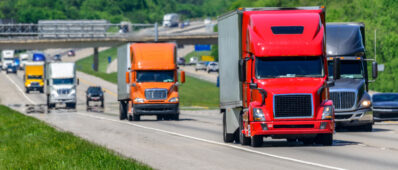Abstract
Tractor-trailers dominate the truck cargo industry. Between 1990 and 2010, this industry grew significantly; vehicle miles traveled increased 87 percent and ton-miles increased by 47 percent. While the growth of trucking miles and tonmiles is a positive indicator of economic transformation and expansion, the trucking sector also produces negative externalities, including but not limited to pavement damage. Pavement damage is closely tied to vehicle weight, which is a product of private market decisions driven by the cost of delivery per ton and the frequency of delivery. Understanding the interplay between fuel cost and private sector decisions on truck dispatch (i.e., frequency and load of trucks) is key to understanding infrastructure damage.


